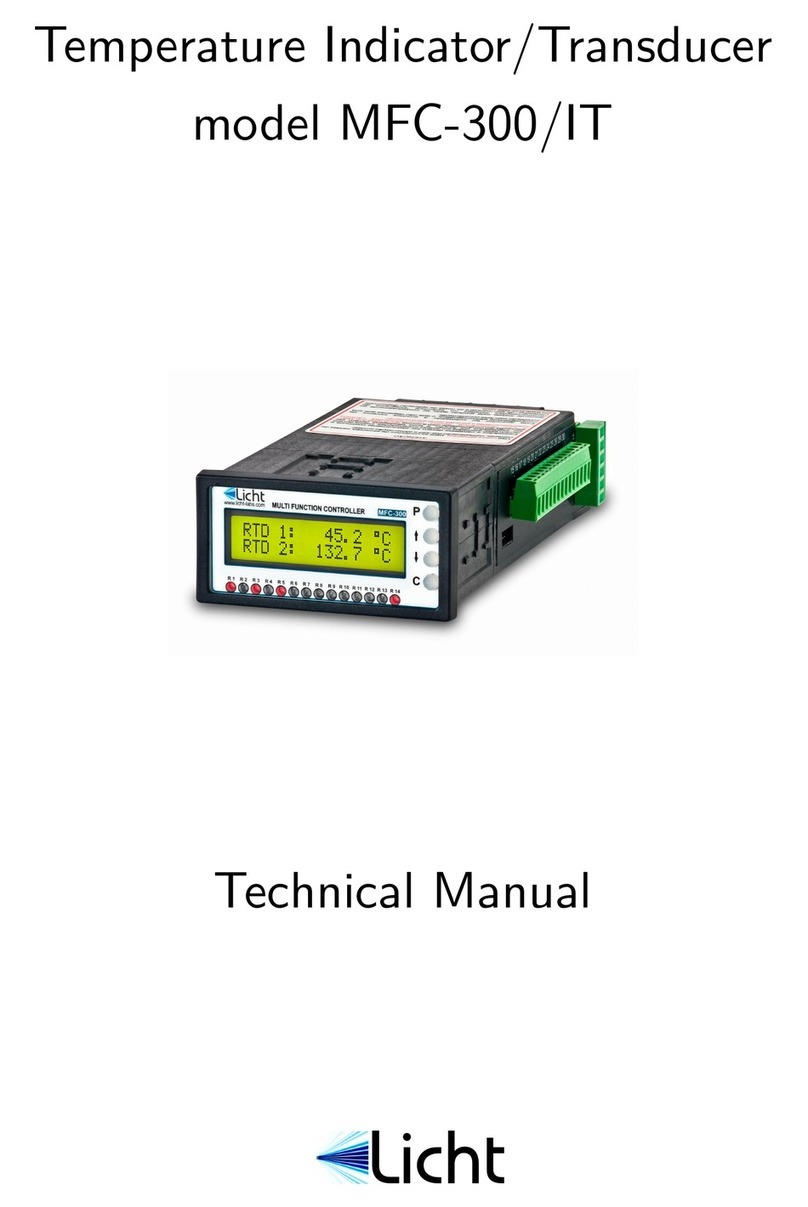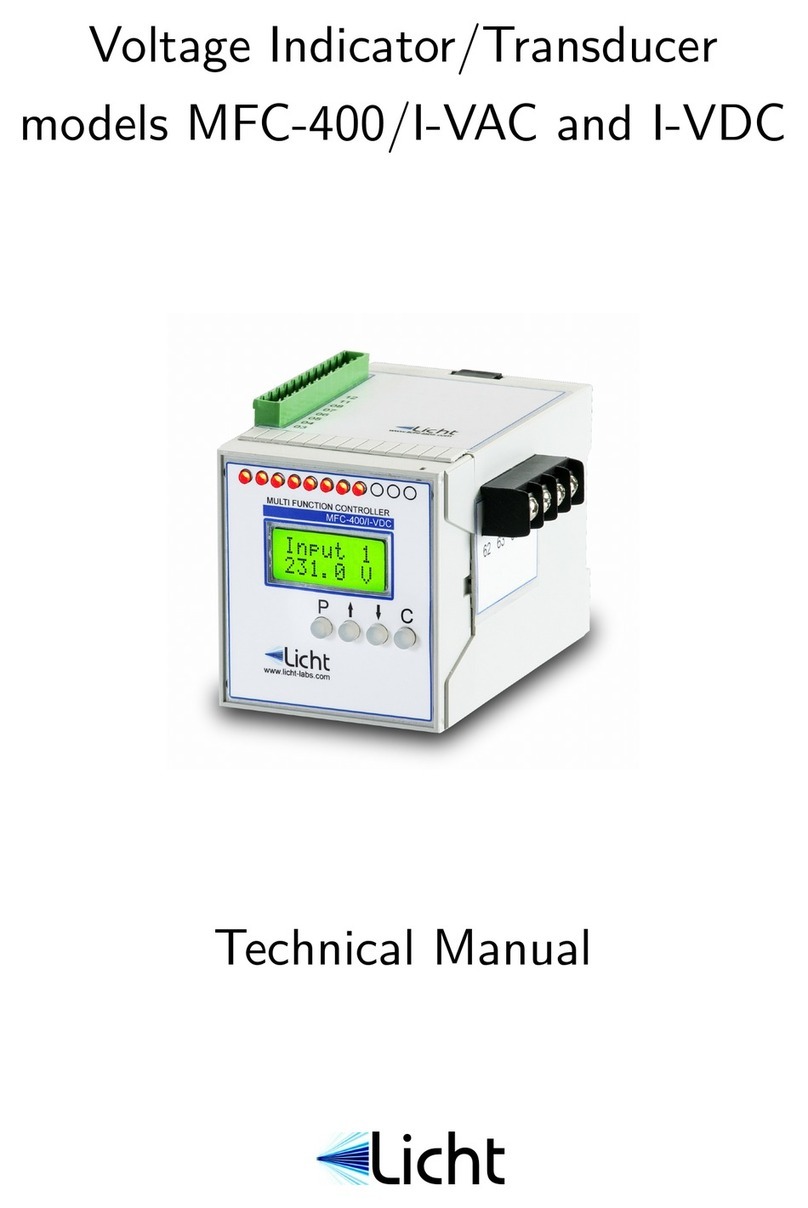
Licht http://www.licht-labs.com
Rev. A0 (30–05–12) MFC-300/I-IAC and I-IDC Technical Manual 6
Parameter:Forced Activation[1-10]
Options: Normal, Activated.
Description: Selects if a relay responds to current variations (Normal) or if it is perma-
nently activated (Activated).
Parameter:Activation Logic[1-10]
Options: Normal, Inverted.
Description: Defines whether a relay’s activation logic is Normal (relay closes when its
set point is exceeded) or Inverted (relay opens when its set point is exceeded).
4.2 Current outputs (option)
Parameter:Output Scale
Options: 0-1, 0-5, 0-10, 0-20, 4-20 mA
Description: refers to the various configurable current loop scales.
Parameter:Full Scale
Options: 0.01 to 10.00 A, in increments of 0.01 A.
Description: input current corresponding to the current loop’s full scale output. For
example, if Full Scale = 5.00 A and Output Scale = 4-20 mA, the current loop output will
be 4 mA for a 0.00 A input and 20 mA for a 5.00 A input.
4.3 MODBUS protocol
Parameter:Baud Rate
Options: 9600, 19200, 38400, 57600, 115200 bps.
Description: baud rate for the RS-485 link.
Parameter:Format
Options: 8N1, 8E1, 8O1, 8N2.
Description: symbol transmission format, where:
◦8N1: 8 data bits, no parity, 1 stop bit.
◦8E1: 8 data bits, even parity, 1 stop bit.
◦8O1: 8 data bits, odd parity, 1 stop bit.
◦8N2: 8 data bits, no parity, 2 stop bits.






























